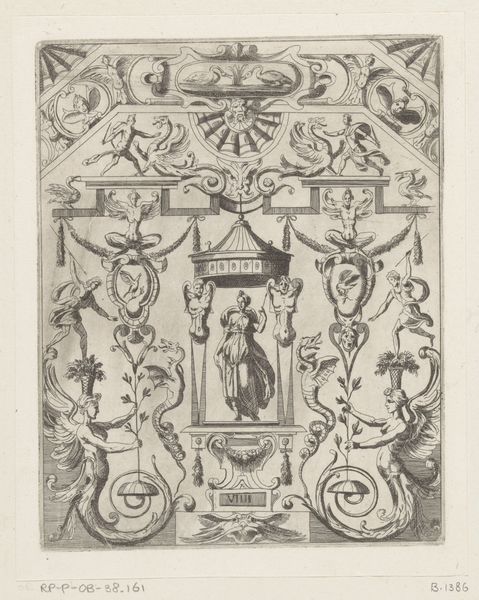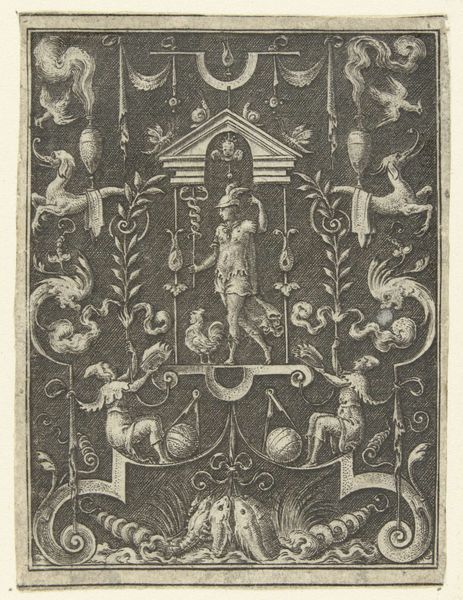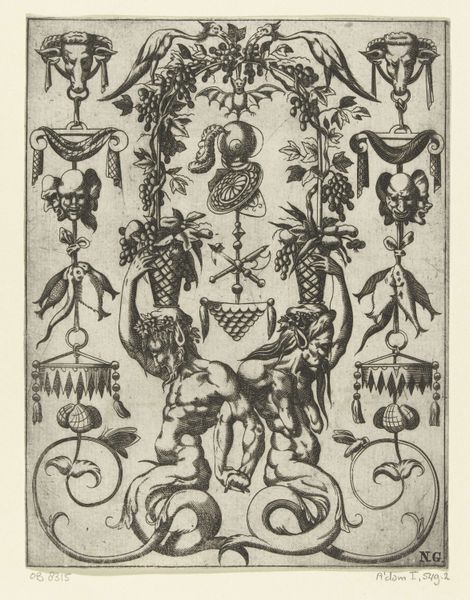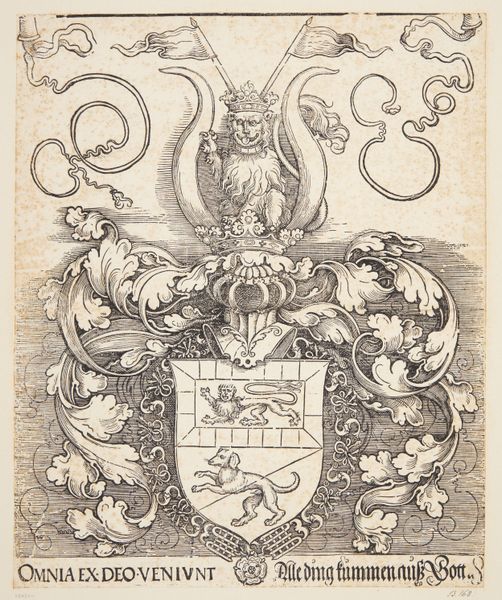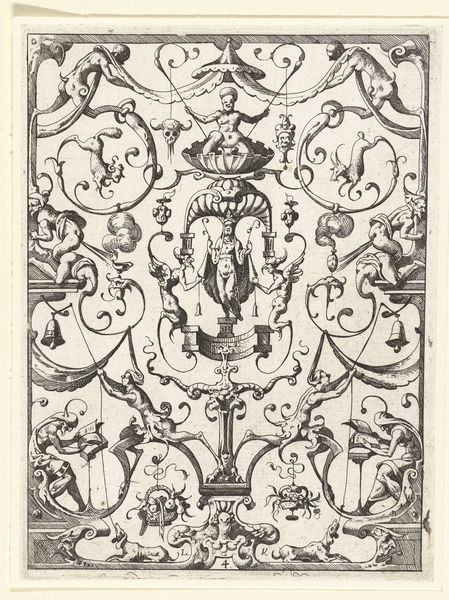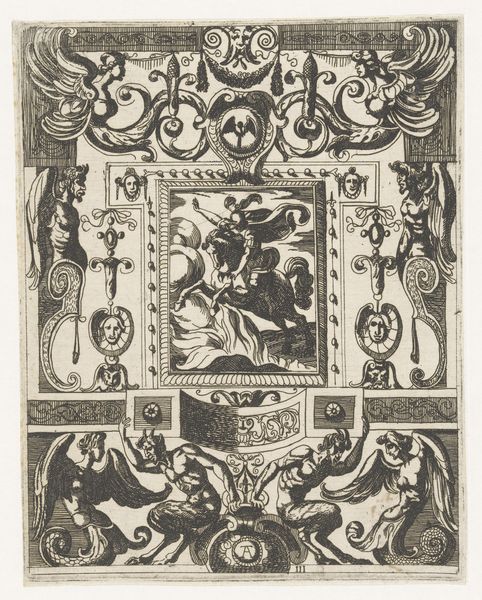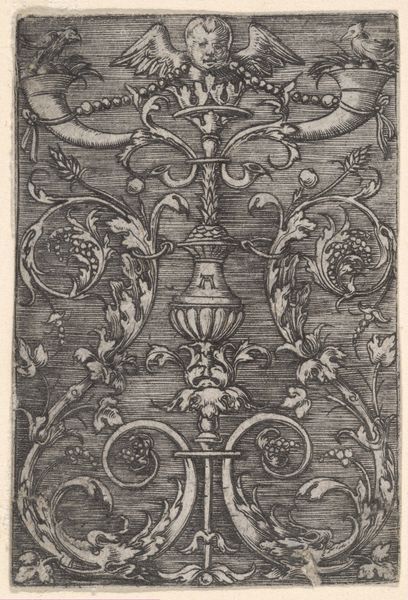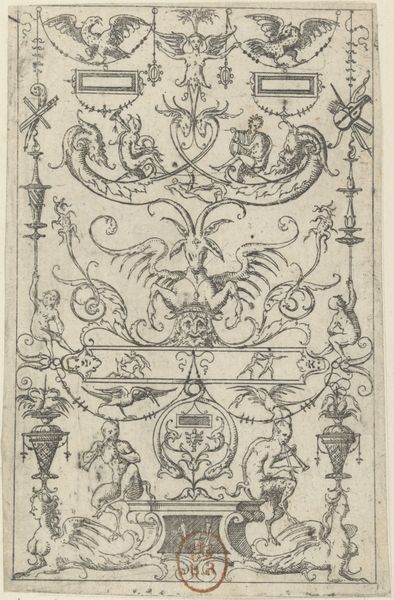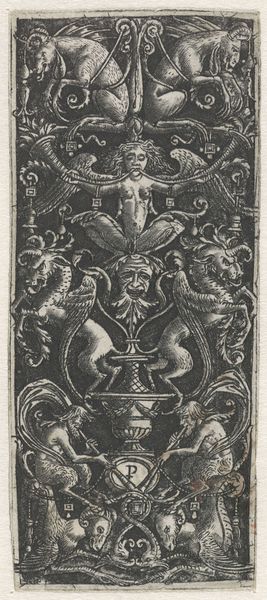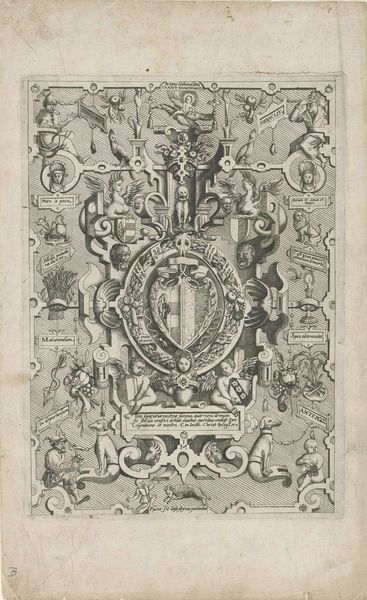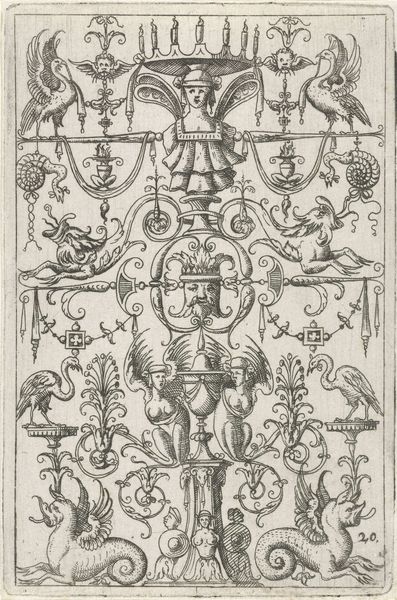
drawing, print, ink, engraving
#
drawing
#
medieval
#
allegory
#
pen drawing
# print
#
ink
#
line
#
history-painting
#
academic-art
#
engraving
Dimensions: Sheet: 5 13/16 × 4 1/8 in. (14.8 × 10.4 cm)
Copyright: Public Domain
Editor: Here we have a trade card with the Royal Coat of Arms, dating from 1800 to 1900. It's an engraving in ink, currently residing at the Metropolitan Museum of Art. The detail is just astounding; you can see the texture created through the engraving process. How would you interpret the significance of such an object? Curator: I see a fascinating interplay between power, commerce, and material production. It's not just a decorative image, but a carefully crafted object designed for trade. Consider the engraving itself - the labor, the skill, the tools needed. Each line etched into the plate speaks volumes about the means of production. Editor: So you're saying it's more than just royal imagery; it’s about how the image was made and circulated? Curator: Precisely. The material value and social context of production are integral to understanding the piece. Think about who commissioned it, who printed it, who used it. Was this card meant for display or direct use in commercial transactions? Its intended purpose is tied to questions about materiality and consumption. Is there a dialogue between high art and the practical labor needed to make a trade card, and is the division actually so stark? Editor: That makes a lot of sense. It really brings into focus the layers of work that went into what appears at first glance to be a simple emblem. How does the print medium affect its value? Curator: Mass production techniques are transforming the art world, making items more widely available to diverse groups and blurring old class and social boundaries. It democratizes art to some degree, challenging existing notions about accessibility and art. The symbolism isn’t just about monarchy, but about distribution and the emerging global economy. What do you think? Editor: I agree, viewing it from that materialist perspective really shifts my understanding. The focus on process and social context opens up so many new questions! Curator: It reveals hidden layers, challenging the traditional emphasis on mere aesthetics or symbolic readings. This really is all about challenging norms and boundaries.
Comments
No comments
Be the first to comment and join the conversation on the ultimate creative platform.
